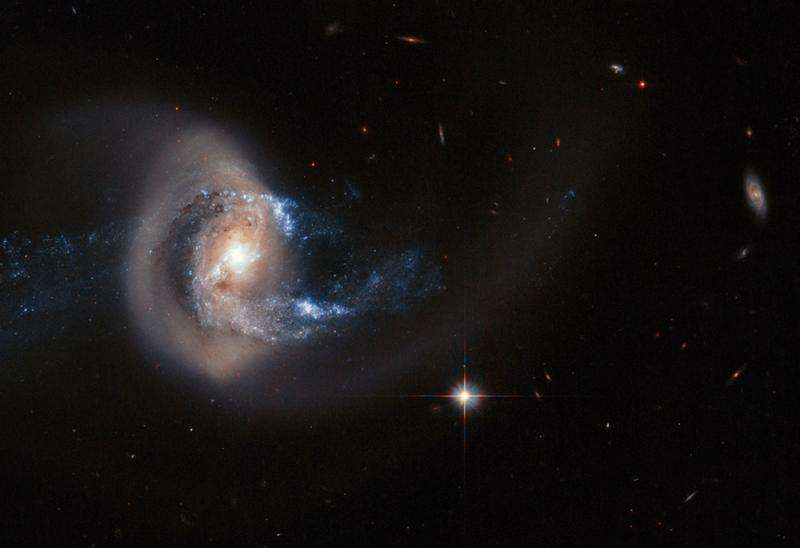Minor mergers are major drivers of star formation

Around half of the star formation in the local Universe arises from minor mergers between galaxies, according to data from the Sloan Digital Sky Survey. The patch of sky called Stripe 82 is observed repeatedly to produce high-quality images of spiral galaxies. Disruptions to the shapes of these galaxies, caused by interactions with their smallest neighbours, pointed to increased star formation in a study being presented at the National Astronomy Meeting at the University of Nottingham.
Gravity, the ubiquitous attractive force that pervades our Universe, is a significant driver of galaxy formation. Gravity makes galaxies collide, and these collisions can affect various properties – merging drives strong star formation in the galaxies in question, increases the masses of their constituent black holes and can significantly alter the internal structure of the galaxies.
Our classical paradigm has often assumed that mergers between equal mass progenitors ('major' mergers) have the most transformative impact on galaxies. However, such events are rare. Much more common are mergers between massive galaxies and small satellites ('minor' mergers). This is because small galaxies far outnumber their more massive counterparts – the attractive nature of gravity then ensures that these massive galaxies are constantly being bombarded by satellites.
While major mergers are more spectacular and easier to study because they tend to be brighter, studying minor mergers requires large surveys which offer 'deep' i.e. long exposure imaging which is able to detect the faint tidal features that are the signatures of minor mergers.
Recently, circumstantial evidence is accumulating that suggests that minor mergers are indeed important drivers of galaxy evolution e.g. the observed size growth of galaxies over the last 10-12 billion years is likely due to repeated minor mergers. This study is the first to use a deep survey to quantify what fraction of the star formation in the nearby Universe is likely to be driven by the minor-merger process. "The results are striking", according to Dr Sugata Kaviraj of the University of Hertfordshire, the scientist behind this work. "Just over half of the cosmic star formation budget is directly driven by minor mergers. In other words, if this process did not take place then galaxies in today's Universe would be at least a factor of two less massive."
Without a good comprehension of the minor-merger process, therefore, our understanding of galaxy evolution will remain incomplete. This paper is a precursor to work that can be done using future instrumentation like the Large Synoptic Survey Telescope which will, for the first time, provide deep imaging over around half the sky, enabling the first statistically robust studies of minor merging over at least 50% of cosmic time.
Provided by Royal Astronomical Society





















